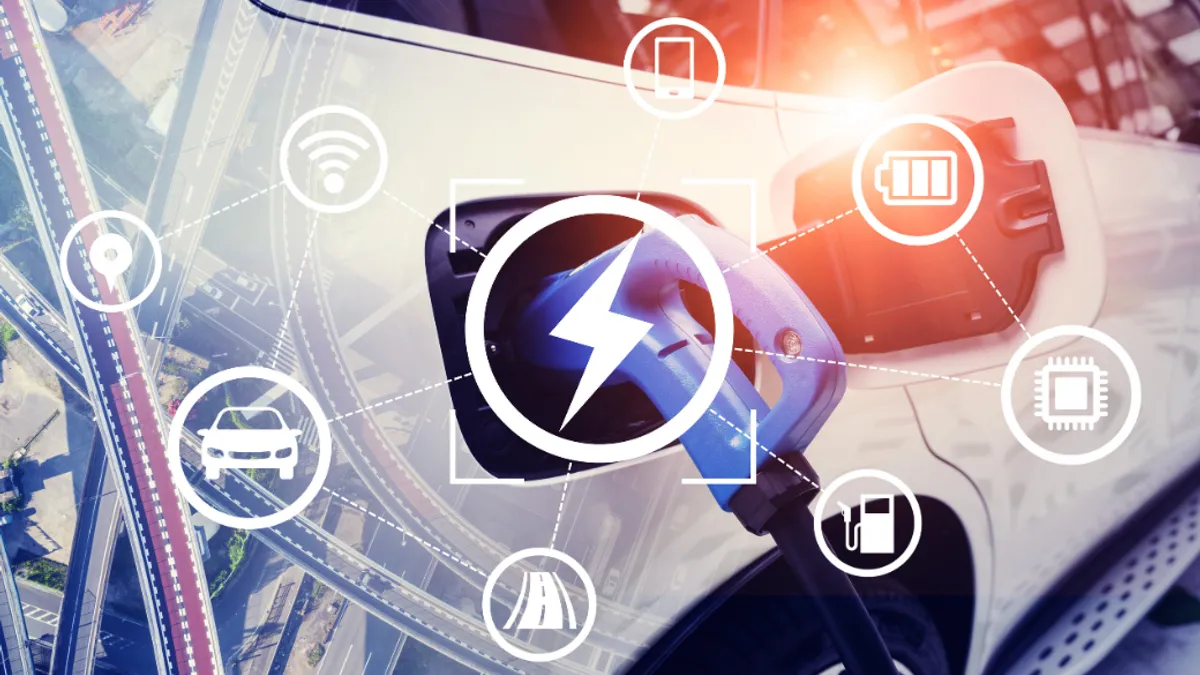Point: Parking Can Be the Gas Station of the Future
Andrew Sachs, CAPP, President, Gateway Parkin Services
The Battery Electric Vehicle (BEV) market is in transition and the time is right for the parking and mobility industry to take advantage of that shift.
While BEVs represented only 1.5% of the U.S. market in 2020, the number of new BEV registrations more than doubled during the first half of 2021—an increase of almost 118% in six months. The cost to purchase a BEV is coming down, single-charge driving range is increasing, and relative costs of ownership appear to drop as the price of gas increases (as it did, by almost 60%, in 2021).
Like a Bolt of Lightning – The Market Shifts
Let’s talk trucks: the Ford Lightning F-150. It is just one of about 100 pure electric models anticipated this year alone. But, as the electric version belongs to the best-selling vehicle line in the US, it stands out to help Ford compete with Tesla sales and, in doing so, tip the U.S. into an electric destiny.
Packed with features, the electric F-150 can power a house for up to three days or serve as a generator. It can rocket from zero to 60 in 4.5 seconds. If Ford can bring the BEV to the masses, it can slay the reputation that electric vehicles are only for the rich. Like a massive bolt of Lightning, the market will be rapidly and permanently changed.
EV users are also establishing new habits. The California Air Resources Board estimated that “upward of 85% of EV charging occurs at home.” Given this willingness to change behavior, there is an opportunity for parking facilities to establish themselves as the go-to spot for EV charging. Traditional gas stations are designed around pit stops to fill up and hit the mini mart. EV chargers take at least 20 minutes at the fastest current rates and may be better suited to a different environment.
There are two primary types of chargers: Level Two 240-volt chargers, which can recharge in about eight hours, and Level Three DC Fast chargers, which can charge in just 20 to 40 minutes. Level Two chargers hit the industry’s sweet spot. Ideal for people parking their cars for longer periods, these needs may be easily met by garages and lots.
The initial fast charge build-out focused on placing Level Three chargers at critical points between population centers. But there is a secondary need: charging networks are looking for locations that provide fast charging while shopping, exercising, dining, and more. A 30-minute quick charge costs more, but convenience may make it worth the premium.
A Coordinated Strategy
As an industry, we can argue that street parking, already losing ground in the fight for the curb, is not the ideal solution for looming electrification needs. Charging stations are rarely the highest and best use for valuable curb space. Instead, we should focus on charging in off-street locations. Not all spots need to be electrified; traditional vehicles still maintain most of the market share. While the number of charging stations vs. traditional spaces are not yet clear, it is likely between 15% and 30% –a significant number. Now, before that need explodes, is the time to start preparing.
So how do we begin? First, place charging stations in prominent easy to find locations. Work with established networks and think creatively about pricing models that make sense for you and your customers, and most importantly—remain flexible.
Read the complete article here.
COUNTERPOINT: A Different Perspective - Parking Should NOT be the Gas Stations of the Future!
Mary Smith, PE, Senior Vice President, Walker Consultants
There is substantial uniformity among consultants, owners, and operators that our industry should prepare to meet consumer demand by providing EV charging stations (EVCS) for near term needs and capacity for the future. However, there is a troubling premise that parking garages and lots should now function as gas stations. At least one city, Boston, is requiring as much as 25% of the stalls in new parking structures be equipped with chargers, and that infrastructure should be provided for 100% of the stalls to be equipped in the future. Other cities require infrastructure for 20 or 25% of stalls.
There is a critical difference between putting in a few chargers today and planning new parking structures to replace gas stations. For this discussion there are two types of parking to consider: destination parking (as a place that someone parks to visit or work), and residential parking.
At least 75% of charging can and should be done at home. The other 25% may not be able to install a charger at home for a variety of reasons. There may be some exceptions to overnight charging, such as if most of the power supply is solar; but in most places in the U.S. today, the grid and the power supply is best able to accommodate a switch to EVs that charge at home when electricity cost is lowest. Charging capability should be provided at parking facilities serving residential uses, with significant capabilities to easily add chargers as the need grows. However, there is no need to provide adequate power to charge every vehicle parked with full power simultaneously.
Let’s talk about the curb. Many of the 25% who can’t charge at home rely on on-street parking. Some cities are working to add curbside charging; New York City plans to increase from 86 chargers today to 1,000 public curbside chargers by 2025.
The only way to recover the cost of DCFC charging is high utilization and turnover. Asking drivers to stay with the car and move it when charging is done is difficult to manage and enforce, and in fact, is functionally much more like a gas station stall than a parking space. I would argue that DCFC charging is not in fact “parking” at all. It can be a service/amenity the property owner chooses to provide, but it is not and should not be defined, counted, and operated as parking.
The Biden administration does not expect destination parking to serve the need for fast charging. Under the Infrastructure Investment and Jobs Act, the first $5 billion (about $15 per person in the US) is allocated “to help states create a network of EV charging stations along designated Alternative Fuel Corridors” – the Interstate Highway System. After that $5 billion network is built out, unspent funds may be available for “any public road or any publicly accessible locations” and will be divided between grants for development along Alternative Fuel Corridors and community charging. It does not appear that any funds will be available for community or residential charging, at least in properties where the owner can afford to provide parking structures. An Edison Electric Institute study (updated 2022) noted that 74% of chargers needed by 2030 will be for home charging and only 1% need to be DCFC. 3,120,000 public (9% of ports) and workplace (16%) ports are required. With an estimated 2 billion destination parking spaces in the US,5 that means at most 1.6% of destination parking spaces would be needed for charging….in 2030!
Why are we asking new parking owners to install significant infrastructure for EV charging that will not be needed until 2030 or beyond (despite rapid advances in battery and EVCS technology)?
We simply do not know how charging will be delivered in 10 years. Batteries may improve in range, and the need for EV charging at destinations may change radically if DCFC at gas stations or in-pavement charging at stoplights occurs. It’s possible that there could be far less need for charging in destination parking in the future than is contemplated today. There is potentially a tremendous and unsustainable waste of capital and resources to provide 25% EV Capable today, much less 25% EVCS installed.
The attitude among policy makers that parking can be the gas station of the future is imposing an unfair burden on new parking facility construction. I fully support and recommend installing chargers today, say two times the local share of EVs on the road at opening day, and EV capable infrastructure to grow that to up to a maximum of 10% of the parking capacity for destinations, with infrastructure for a maximum of 25% of residential parking.
Our industry needs to bring a voice to the table for reasonable and rational plans for EV charging, and advocate that parking will not be, indeed does not need to be, the gas station of the future.










